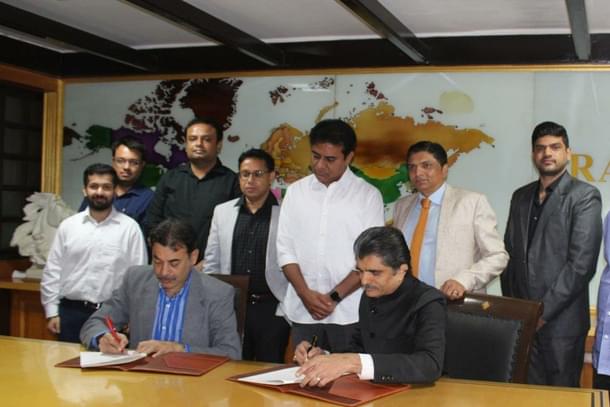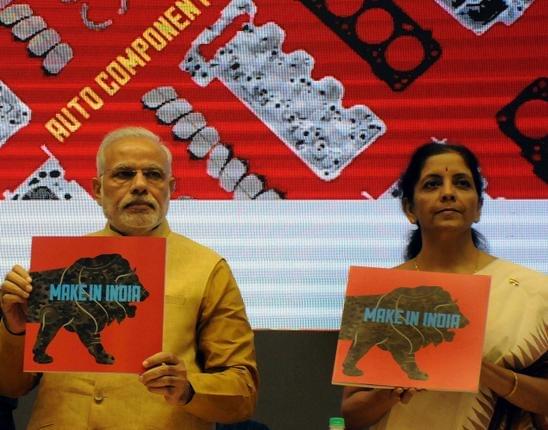Infrastructure
With Centre's Incentive Push, Rajesh Exports Announces Rs 24,000 Crore Investment In Telangana To Build Display Fab
India Infrahub
Jun 13, 2022, 10:30 AM | Updated 12:37 PM IST
Save & read from anywhere!
Bookmark stories for easy access on any device or the Swarajya app.


With the union government's Rs 76,000 crore incentives package for domestic manufacturing of semiconductors and displays, Elest, a subsidiary of Rajesh Exports, has decided to build India's first modern display manufacturing unit in Telangana.
This move includes an investment of Rs 24,000 crore to make the most advanced AMOLED displays in the state.
State IT and industries minister KT Rama Rao announced the investment as a historic day for Telangana.
He said that what was possible only in Japan, Korea, and Taiwan would now happen in Telangana.

In February 2022, two companies, namely Vedanta and Elest, submitted applications for Display Fabs with a projected investment of USD 6.7 billion, with fiscal support sought from the Central Government being nearly USD 2.7 billion.
Applications have been filed for setting up Gen 8.6 TFT LCD Display Fab and 6th Generation Display FAB to manufacture state-of-art AMOLED display panels used in the advanced smartphones.
The applicant companies under the Semiconductor and Display Fab Schemes have been acknowledged by India Semiconductor Mission (ISM). ISM has been established as an independent institution to spearhead the Semicon India programme.
Importance of electronics and India's role
Electronics permeates all sectors of the economy, and the electronics industry has cross-cutting economic and strategic importance.
Currently valued at around USD 2 trillion (around Rs 150 lakh crore), the global electronics market is expected to grow significantly given the increasing penetration of emerging technologies, including 5G, IoT, Artificial Intelligence, Robotics, Smart Mobility, Smart Manufacturing, etc.
The domestic production of electronic goods has increased substantially from Rs 1.9 lakh crore in 2014-15 to Rs 4.97 lakh crore in 2020-21 (industry estimates) at a Compound Annual Growth Rate (CAGR) of 17 per cent.
India's share in global electronics manufacturing has grown from 1.3 per cent in 2012 to 3.6 per cent in 2019, as per industry estimates.
However, domestic value addition is estimated to be in the range of 10 per cent to 30 per cent only, and growth in manufacturing so far has primarily been on final assembly using imported components, sub-assemblies/parts, etc. This is due to the country's lack of a robust semiconductor and display manufacturing ecosystem.
Semiconductors and displays are the foundation of modern electronics driving the next phase of digital transformation under Industry 4.0.
Also, displays constitute a significant portion of electronic product Bill of Materials (BoM). For instance, displays account for over 25 per cent of the BoM in the case of smartphones and over 50 per cent in the case of LCD/LED TVs.
As per estimates, India's display panel market is estimated to be around USD 7 billion (over Rs 52 thousand crores) and is expected to grow to about USD 15 billion (over 1.15 lakh crore) by 2025.

Centre's incentive push
Semiconductors and display manufacturing is a very complex and technology-intensive sector involving huge capital investments, high risk, long gestation and payback periods, and rapid technological changes, which require significant and sustained investments.
In December 2021, the Union Cabinet approved the Semicon India Programme with an outlay of Rs 76,000 crore to ensure the development of a robust and sustainable Semiconductor and Display ecosystem in the country.
The program will give an impetus to semiconductor and display manufacturing by facilitating capital support and technological collaborations.
Under the scheme for setting up Semiconductor Fabs and Display Fabs in India, the union government shall extend financial support of up to 50 per cent of project cost (subject to a ceiling of Rs 12,000 crore per display fab) on a pari-passu basis to applicants who are found eligible and have the technology as well as capacity to execute such highly capital intensive and resource incentive projects.
Also, the Government of India will work closely with the State Governments to establish high-tech clusters with requisite infrastructure on the land, semiconductor-grade water, high-quality power, logistics and a research ecosystem.
The Union government currently aims to approve applications for setting up at least two Display Fabs in the country, and Elest's investment in Telangana could be part of it.





